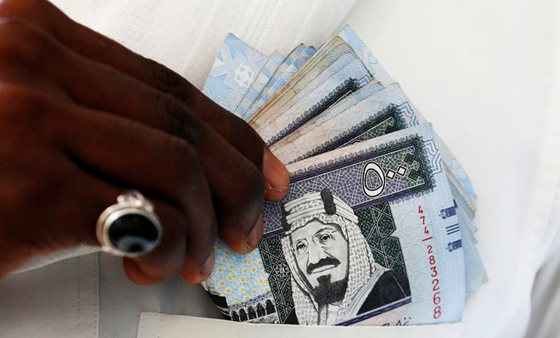Jeddah, Oct 8: Standard & Poor’s has affirmed an ‘A-/A-2’ rating for Saudi Arabia and maintains that the outlook for the Kingdom is stable.

“The outlook for Saudi Arabia is based on an expectation that the authorities will take action in order to prevent any deterioration in its fiscal position beyond our current expectations, over the next two years,” S&P said in a statement.
S&P believes the Saudi balance sheet will remain strong between 2016 and 2019, despite the sharp fall in oil prices in recent times.
Standard & Poor’s asserted that Saudi Arabia’a outlook could have been more positive if it weren’t constrained by limited public sector transparency and lower GDP per capita in comparison to similar states.
It predicts that the average annual rate change in government debt over 2016-2019 will level out at around 5 percent of GDP.
The statement added: “The ratings on Saudi Arabia are supported by its strong external and fiscal stock positions, which we expect will be maintained despite significant current account and fiscal deficits. The ratings are constrained by limited public sector transparency, lower GDP per capita relative to similarly rated
sovereigns, and constrained monetary flexibility.”
S&P indicated that “we could raise the ratings if Saudi Arabia’s economic growth prospects
improved markedly beyond our current assumptions”.
Standard & Poor’s also said: “We project that, reflecting the sharp decline in oil prices since the summer
of 2014, the general government deficit will average about 9 percent of GDP in 2016-2019. Our forecast for the annual change in general government debt (which is our preferred fiscal metric because in most cases it is more
comprehensive than the reported headline deficit) is for an average increase of about 5 percent of GDP. In the case of Saudi Arabia, the change in general government debt is lower than the deficit as we have assumed an even split between asset draw-downs and debt issuance in terms of deficit financing. We acknowledge both upside potential and downside risk to these forecasts. Upside potential stems principally from oil prices. The downside rests with the scale of the required fiscal consolidation and the broader impact it will likely have on the economy.
The statement added: “Highlighting the government’s difficult policy choices, we note evidence that lower government spending is adversely affecting the country’s private sector. In particular, there have been reports of a rise in public arrears to private sector construction companies. As a result, companies have been cutting their workforce and withholding salaries. We expect banking sector asset quality to deteriorate but not sufficiently to endanger system solvency, owing to countercyclical buffers the regulator has imposed in recent years.”








Comments
Add new comment